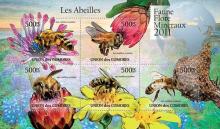The toxicity of clothianidin to honey bees follows the Druckrey-Küpfmüller equation
We performed various laboratory bioassays to assess the effects of clothianidin on the survival and behavior of winter bees. Oral lethal and sublethal doses were administered throughout 12-day. The obtained LD50 values at 48, 72, 96 h and 10 days were 26.9, 18.0, 15.1 and 9.5 ng/bee, respectively. Concentrations <20 µg/kg were found to be sublethal. Oral exposure to sublethal doses was carried out for 12-day and, the behavioral functions were tested on the respective 13th day.


